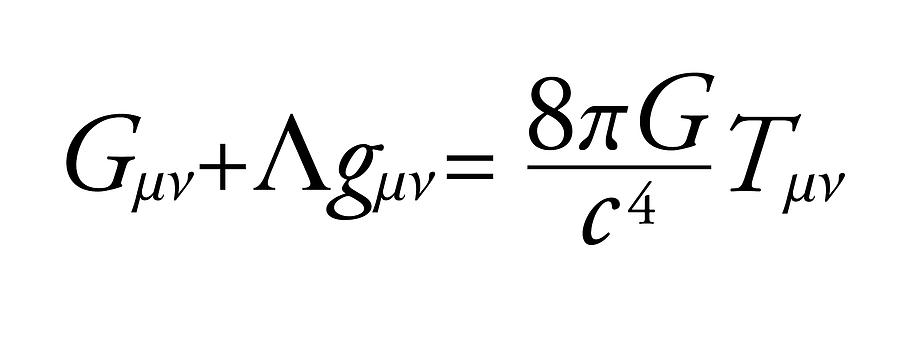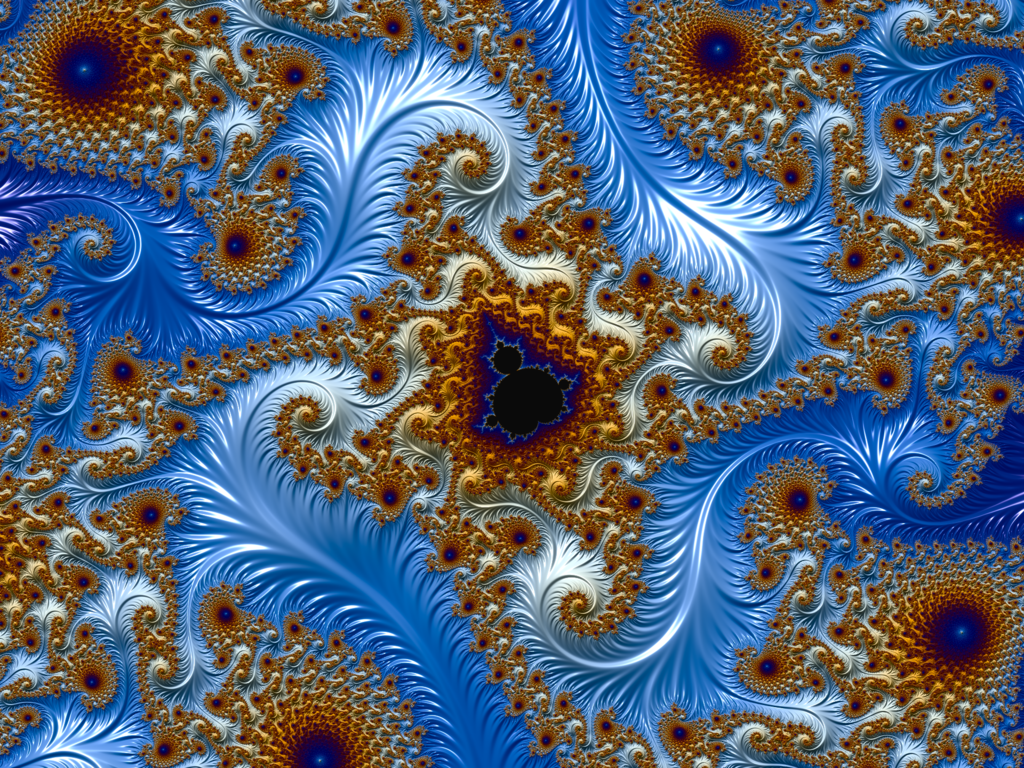Time and Space Around a Black Hole
“Do you realize that if you fall into a black hole, you will see the entire future of the Universe unfold in front of you in a matter of moments and you will emerge into another space-time created by the singularity of the black hole you just fell into?” – Neil deGrasse Tyson
If it’s possible to have a favourite astronomical object, I’m sure black holes would be fairly high on everyone’s list. You can’t escape from one, you can’t know what’s inside one, and they’re invisible – what could possibly be more terrifying and exciting to talk about?
Because black holes are such strange and awesome entities, factoids about them get thrown about all the time. They’re pretty incredible factoids too, as Neil says, if you were to look back toward the universe as you fell into a black hole, you would “see the entire future of the universe unfold in front of you”.
Here I will present a few amazing factoids about black holes, sort the truths from the myths, and give an idea of where these factoids come from.
Einstein’s Equations & The Metric
When dealing with astronomical objects, the proper place to start is with Einstein’s equations – the key equations of General Relativity:

Now, it would take you about three years of university level physics to understand what this equation means. To put it simply, this equation tells you how the curvature of spacetime (the terms on the left hand side) is related to the mass and energy distribution in spacetime (the term on the right hand side).
Now what we work with when examining simple black holes is a solution to this equation. We assume that the black hole is the only object in our universe, and that the black hole is spherically symmetric. Along with a couple of other assumptions about the nature of space, we can solve Einstein’s equation to give us what’s called the “Schwarzschild Metric”:

t is time, m is the mass of the black hole, r is the radius away from the black hole
This metric tells us how distances and times are measured at various points in the spacetime. Essentially what we’ve done here is found the shape of spacetime if we have a black hole at the centre of our model universe and nothing else.
We can extract many of the cool facts you hear about black holes directly from this metric, we shall look at this now.
The Singularity at the Centre of the Black Hole
If you’re mathematically inclined, you may have noticed that there are two places in the spacetime where this metric diverges – giving us a singularity.
At r=0 (the centre of the black hole), we get the 2m/r terms diverging to infinity. This is what’s called a “true singularity”, it turns out that no matter what coordinate system you use, this singularity will always be there. This “true singularity” is the black hole itself. This is why you’ll hear black holes referred to as singularities, and why we don’t really know what happens at the centre of a black hole.
Singularities are places where the laws of physics as we know them break down. Don’t be fooled into thinking however that no physics could ever comprehend what goes on inside a black hole though. What we really mean when we say that the laws of physics break down at a singularity is that in our simplified model of a black hole, we have no way of modelling what goes on at the point where the singularity occurs.
It is almost certainly the case that inside a real black hole, there is no singularity. Until we have a good theory of quantum gravity however, we don’t know what’s going on instead of a singularity inside a black hole.
The Schwarzschild Radius
As I said above, there’s another place, or region, where we get a singularity.
If r=2m then 1-(r/2m) becomes zero and then we’re dividing dr^2 by zero, giving us another singularity. This singularity is not a true singularity like at r=0. This is called a “coordinate singularity”, if we change to a different coordinate system, the singularity disappears. What this means is that something funny occurs at r=2m, but the laws of physics are perfectly able to describe what goes on here.
The radius r=2m is given a special name. It’s called the Schwarzschild radius, although you’ve probably heard it by a different name. This radius is popularly known as the “Event Horizon” of a black hole, the point at which even light is unable to escape from a black hole.
Because there is a singularity at this point means we get all sorts of interesting effects happening close to the event horizon of a black hole.
Seeing an Object Fall In
Let’s start with what an observer outside the black hole would see. If you’re outside the black hole and see an object fall towards it, what do you see?
From your perspective, the object would begin to behave slower and slower. Imagine you’re throwing in a clock. As the clock gets closer to the event horizon, the hands of the clock will slow down continuously until it looks like they’ve stopped ticking. The clock isn’t broken, it’s just experiencing time at an increasingly slower rate as it falls in, so it appears to you as though it’s not ticking anymore.
You’d also see the clock becoming redder and redder. The way we see things is by bouncing light off of them, so in order to see the clock we have to bounce a light pulse off of it. The light pulse however, is affected by the strong gravitational field of the black hole during its journey. It turns out that the stronger the gravitational field, the more red shifted light becomes as it travels. This is known as “Gravitational Red Shift”.
So as the clock gets closer to the event horizon, the gravitational field becomes stronger, and so the light becomes more red shifted, so the clock gets more and more red as it approaches the horizon.
(In actuality, the clock would disappear because the light would become so red-shifted that it goes out of the visible light spectrum and into infra-red/microwave/radio wave spectrum. But that’s no fun, we’ll pretend you can see radio waves for now.)
Perhaps the coolest fact however about an object falling into a black hole is that you’d never actually see it fall in. Because the event horizon is a singularity, and if you do the maths, it means that from your perspective it takes an infinite amount of time to reach the event horizon.
So the clock gets slower and slower and redder and redder as it approaches the event horizon, but never falls in. Eventually however, the light bouncing off the clock would become so redshifted that you wouldn’t be able to see it.
Falling into a Black Hole
Now let’s reverse the scenario, what would you see if you were the one falling into the black hole?
Since the event horizon is a coordinate singularity, there’s nothing funny that happens to you as you cross it. As far as you’re concerned it’s an ordinary region in space. Getting this close to a black hole however would rip you apart due to the sheer difference in the gravitational field across your body – but we’ll presume for whatever reason you’re indestructible.
If you were looking towards the black hole, you’d accelerate at an ever increasing rate straight towards it. It would take almost no time at all to reach the centre, presumably upon reaching the centre you’d slam into the mass of whatever else is inside the black hole and be crushed against it. Once again though, we don’t know if stranger things happen at the centre, but being crushed into a tiny point is probably the most likely event.
Since no light can travel out of the black hole towards you, the black hole will (unsurprisingly) appear black for your whole journey.
Looking out of the black whole however, loads of light is coming into the black hole, so you’ll be able to look out into the universe for as long as you fall in. Now whereas if you’re outside the black hole, things that fall in appear to behave slower, if you’re falling into the black hole and look out into the universe, you will see the universe speed up.
It is as Neil deGrasse Tyson says, you would be able to see aeons of the universe pass by in an instant.
Wormholes and Universes inside Black Holes
Although Neil goes on to say that you’ll fall into another space-time created by the black hole this, really, is speculation.
Because we don’t have a theory of quantum gravity, which would tell us how space, time and the black hole itself would behave at the centre of a black hole, anything that anyone says about what happens at the centre of a black hole is speculation.
It has certainly been shown by various models that objects such as wormholes can exist in principle, but these models are currently hypothetical.
There are many things we know about the awesomeness of black holes – they are certainly wondrous entities indeed, but for now, we have absolutely no clue what actually goes on at the centre of one.


Are you a lecturer of an university ?
LikeLiked by 1 person
Great post …. I really like your content
Are you a lecturer of any university?
LikeLiked by 1 person
Thank you very much! No, but it flatters me that you think I might be! I’m currently in the last year of my Masters degree, although I hope to go on to do a PhD next year. Thank you for your interest in my blog and I hope you enjoy its content in the future!
LikeLike
Ok 😊
LikeLike
Remarkable! Its in fact remarkable piece of writing, I
have got much clear idea concerning from this article.
http://zrt.ru/
LikeLike